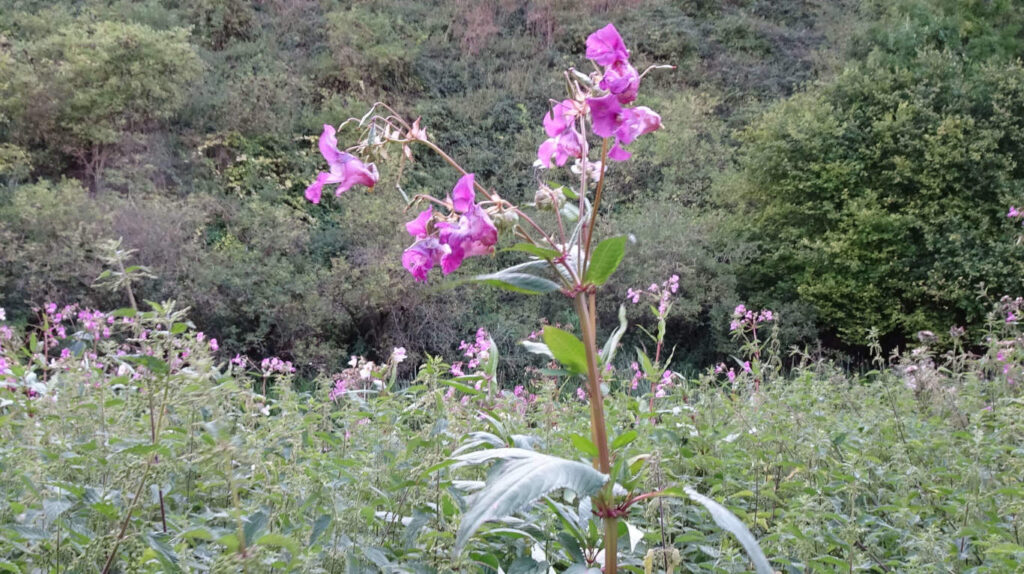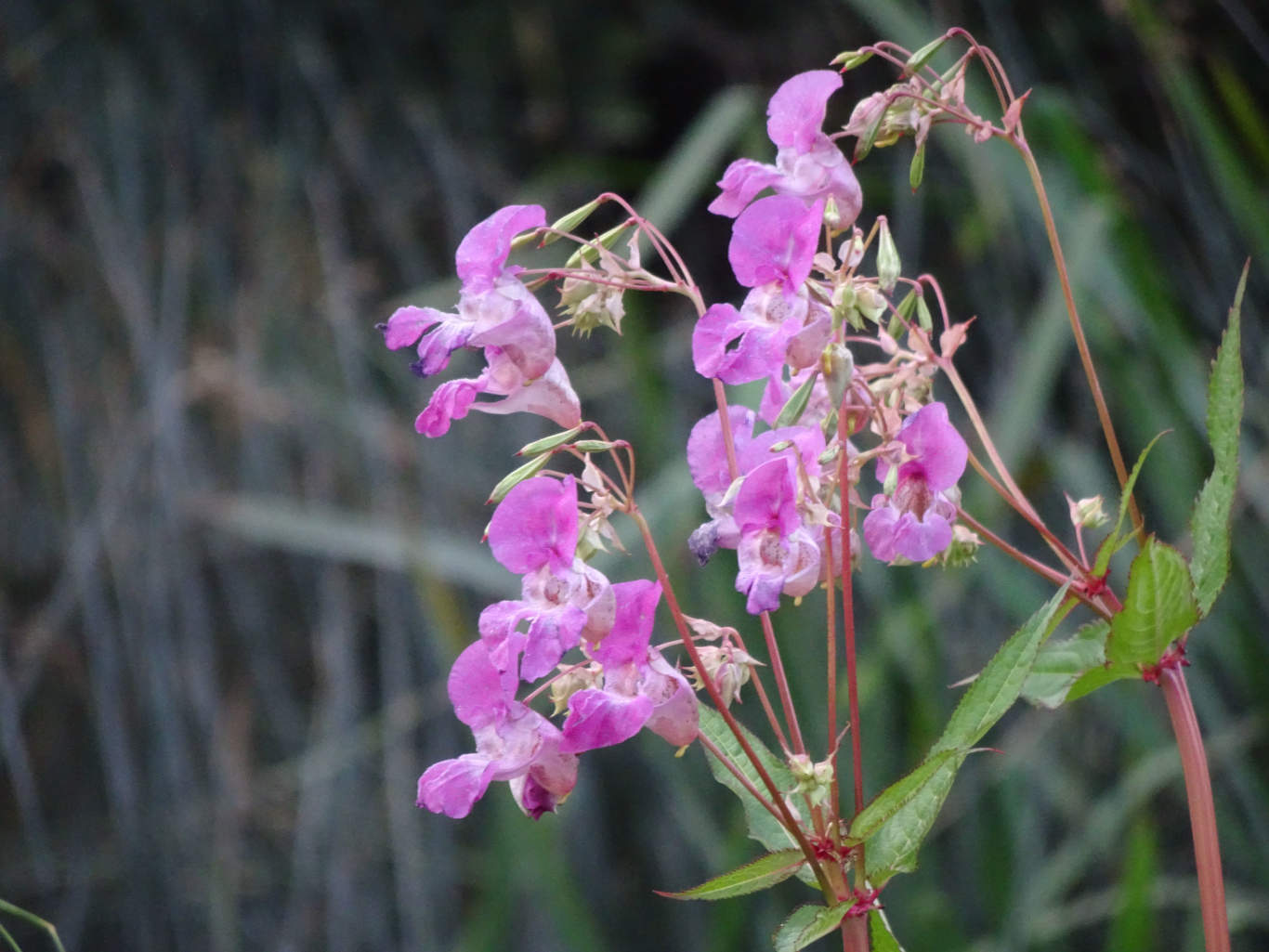If you are out and about in mid to late summer you may well happen upon this waterway loving plant:



This is Himalayan balsam (Impatiens glandulifera) and it’s invading our river banks with worrying repercussions.
Garden Escapee
Himalayan balsam was introduced to the UK in the 1830s as an ornamental garden plant. Since then it has escaped to the wild and is now a common sight along British waterways. It can grow to 3 meters tall and each plant can produce 800 seeds that are cast from exploding seed pods. The seeds are transported by the water alongside which the plant thrives and can rapidly spread downstream.
Why is it so bad?
Himalayan balsam is loved by bees and is a great source of late summer nectar, which all sounds good, but there are a number of problems:
- It has a negative impact on our Native Species
Himalayan balsam is an invasive plant and can quickly overtake areas of riverbank out-competing native plant life. Many of our native invertebrates have evolved to use our native plant species exclusively in their life cycles. When Himalayan balsam takes over these species decline along with the native plants upon which they depend.
- It has a negative impact on our Native Species
- It can lead to erosion of river banks
Himalayan balsam is a shallow-rooted annual. An annual is a plant that lasts for only one season and dies back fully in the winter. Many of our native plants are perennials which means they grow back each season from the same roots. These roots remain living in the ground over winter and help bind the earth together giving it structure and stability. Where Himalayan balsam dominates the deeper-rooted native species disappear leaving only short-lived shallow roots offering little protection against riverbank erosion.
- It can lead to erosion of river banks
- It hogs the bees
Bees love Himalayan balsam as it is rich in nectar. In fact they love it so much they forsake our native species in their search for nectar, this leads to less pollination of our native wild plants.



Officially a Problem
Such is the negative impact of Himalayan balsam that it is listed under Schedule 9 of the Wildlife and Countryside Act 1981.
Schedule 9 lists non-native species that are established in the wild and present a conservation threat to native biodiversity and habitats. This means any actions that knowingly cause the further spread of the plant are prohibited.
What Can You Do?
You can get yourself signed up with your local Himalayan balsam bash…
A balsam bash involves a group of volunteers gathering together and physically removing the plant. This can involve pulling it up or chopping off the flower heads to prevent it from going to seed.
A quick search of the internet should provide you with the details of your nearest balsam bash.
Due to the proximity to water and other such dangers you should always join a well organised group if you want to do your bit to tackle this invader.


